We live a set number of years and in all that time we are negotiating places and situations that are full of things. And always we are using our eyes and all our senses to determine meaning and importance. Always there are shapes, colors, curves and edges, lines and masses, darks and lights, brights and dulls, big and smalls, all coming together, and ever-changing, almost by the minute, to create existence.
For those of us who make pictures as a way of bringing meaning to our worlds, this sticking together of things IS abstraction. Things somehow fit together in the world so in our pictures and we have to find a way of making a host of things co-exist in a unified and exciting way.
I think an art education should include a rigorous discipline and interest in observational drawing, painting, or sculpting, but all of this has to fit within plenty of experience of design and abstraction. So while you are taking classes in life drawing, you might also be making abstract compositions in various ways. By working in an abstract way you are simply finding fascinating ways of combining parts. Is one method more about life and reality than the other? No.
Underneath everything that we see, name, and give importance to, is this never-ending mashing together of elements. And we understand this both through our eyes and other senses, and through our minds as well. Everything is in flux, but everything is also beautifully tied together! The aim of image making should not be just to skillfully imitate or create a recognized likeness, but to find new ways of seeing and understanding.
This leads to the idea that painting is really about METHODS. The method precedes the final result. Create the method, and in essence you create the finished artwork.
In this mailing I want to show and briefly discuss 2 of the methods I use to make pictures. Each has slightly different aims than the other.
Painting should not be just about recording what you see. You also sense, feel, develop moods, understandings, outlooks, based on lived experience, or a host of influences operating upon you at any particular time. These are not about SEEING at all…they are about being alive. So, painting should have ways of addressing non-visual realities as well.
I will often make work that start as collages, and then I add paint in the latter stages. This method helps address the need to make a picture about more than mere appearances. There is usually a certain type of thought in my mind and also emotions as I start. This feeling is often related to a particular place or situation, but to simply represent the place would not do because the feeling seems to relate to something larger and broader as well. And this thing, this larger subject, is hard to name or identify.
For this reason, it is so helpful to start out with just feelings or hunches and let those find some equivalency in the choices I make with abstract color and shape. This is an exciting stage of the work because I usually feel lost, and the work involves inching and guessing towards some arrangement. Every new shape or color that is added changes the mood and associations in the work.
While I don’t wish to state that there are rules of composition, inherent rules of thumb do seem to make themselves felt. At the start it is fine and even helpful to create something approaching chaos because that will encourage rich associations in my mind as I work. But gradually, visual complexity asks to be culled down to something simpler and more coherent, so editing just naturally takes place.
I finally arrive at something that hints at, is in the neighborhood of, the feeling or sensation I started with. Is the finished image close to that original thought? I seriously doubt it. But, the picture produced by this method at the very least acknowledges that there is a category of experience that requires addressing in some way……and this is a way of dealing with that need.
It seems very important for me to continue making pictures of this type along with the other more obviously representational things I make.
The 3 pieces directly above also use this method of allowing feeling to dictate through abstract arrangement of shape, color and line. I alternate my methods, sometimes almost on a daily or weekly basis.
The method I’ll outline in these final 2 pieces is related but somewhat different than the method outlined above.
I’ll sometimes start representational landscapes by first collaging a few simple color shapes over the entire picture area. The reason for doing this is to allow for the simplest, most stark, and possibly the most powerful color arrangements even before much representation is considered. Collage is a wonderful method of finding new color relationships, so it’s exploratory by nature. Reducing unnecessary information, thereby creating an image that is more iconic, almost emblematic, is also very appealing because it focuses only on the essential.
Works such as these are made both on paper and panels.
Even while I am very much tied to representational concerns, it is necessary to engage with underlying abstract issues first and foremost. There is no escaping this.
I continue to produce and post work on a daily basis to my two online sites:


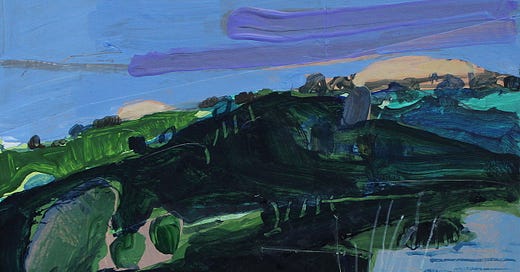



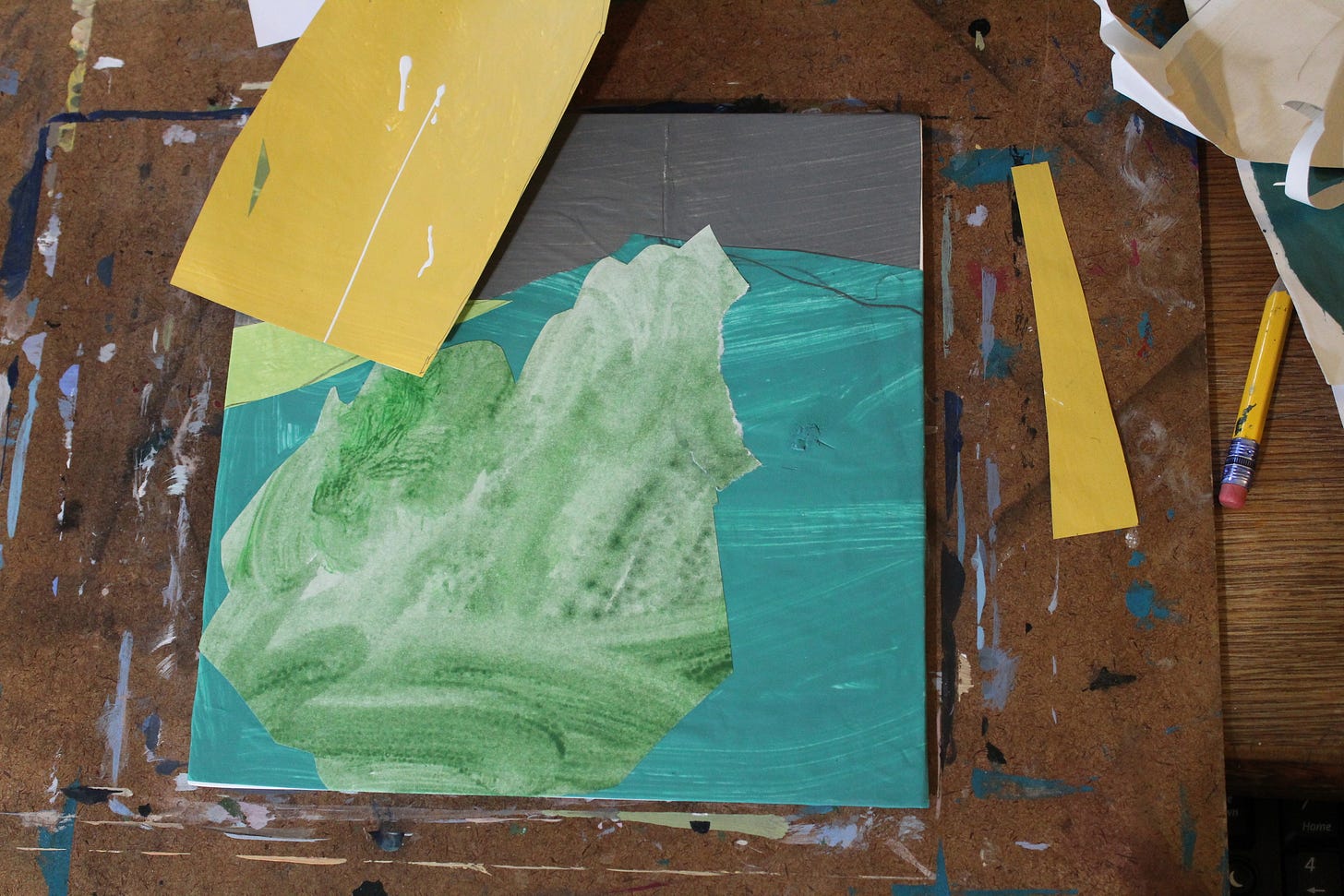
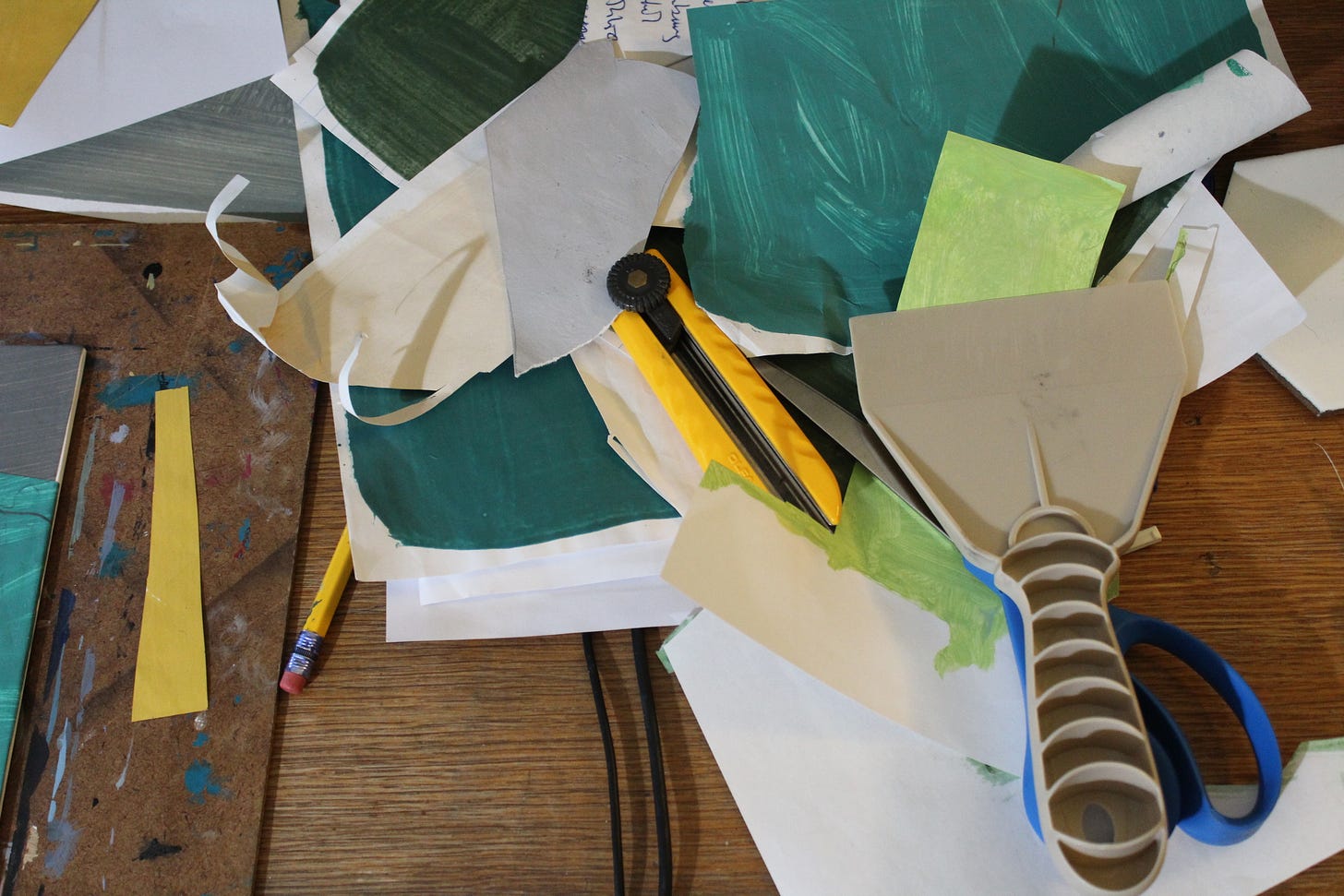
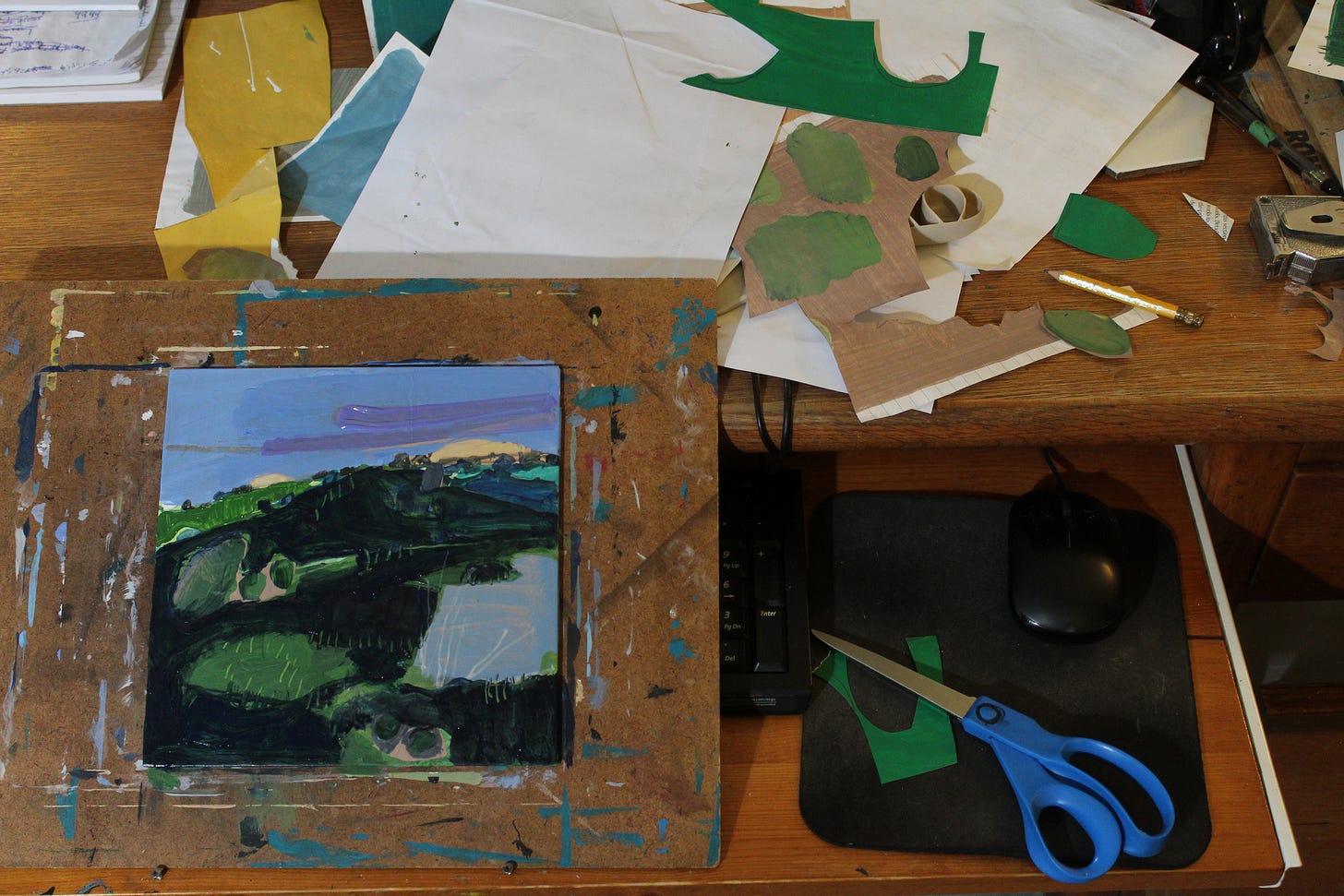
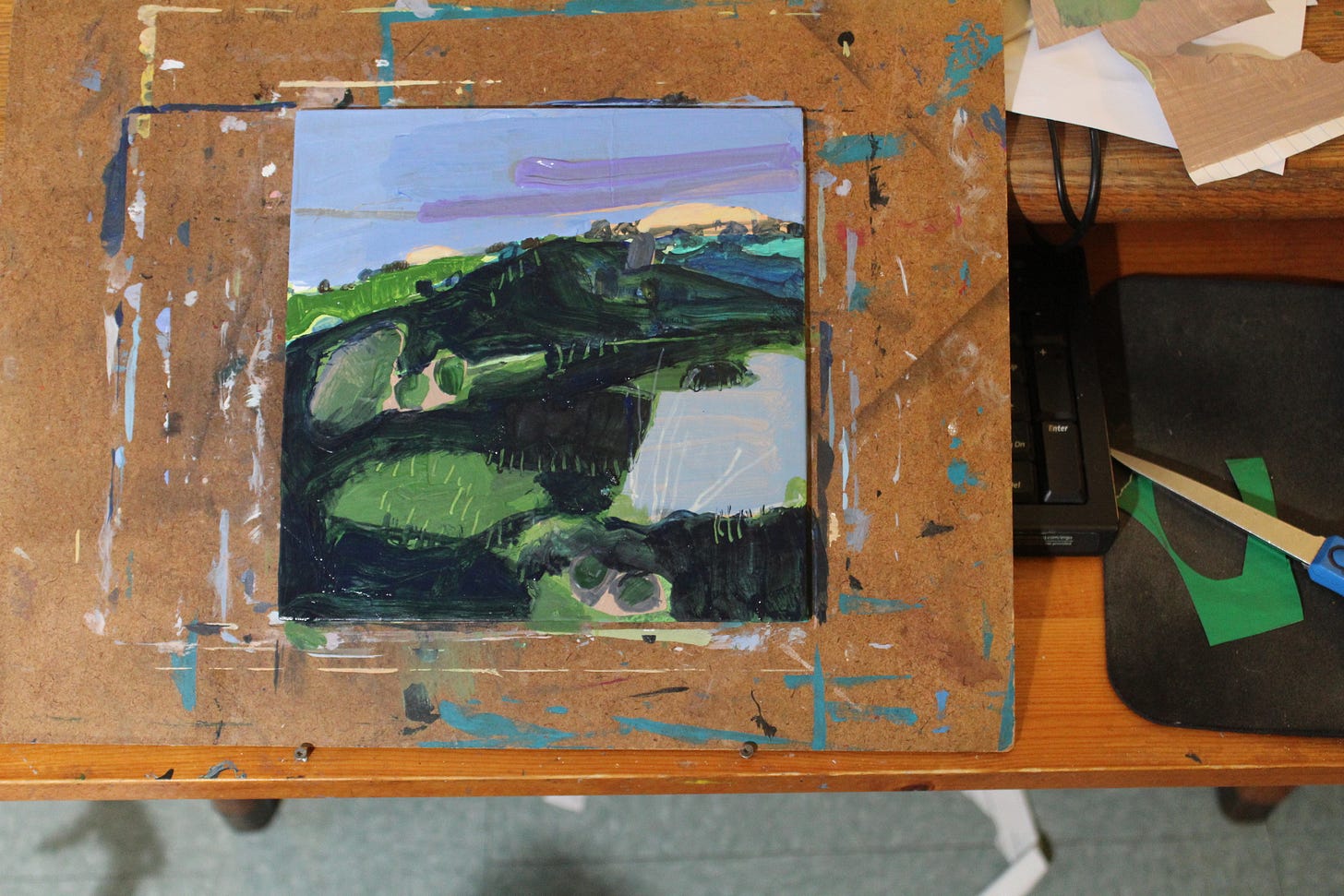

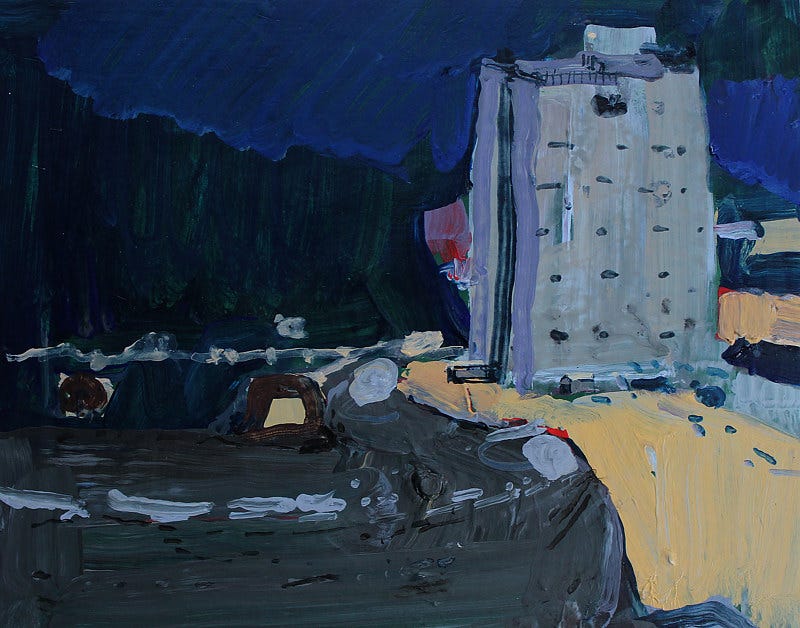
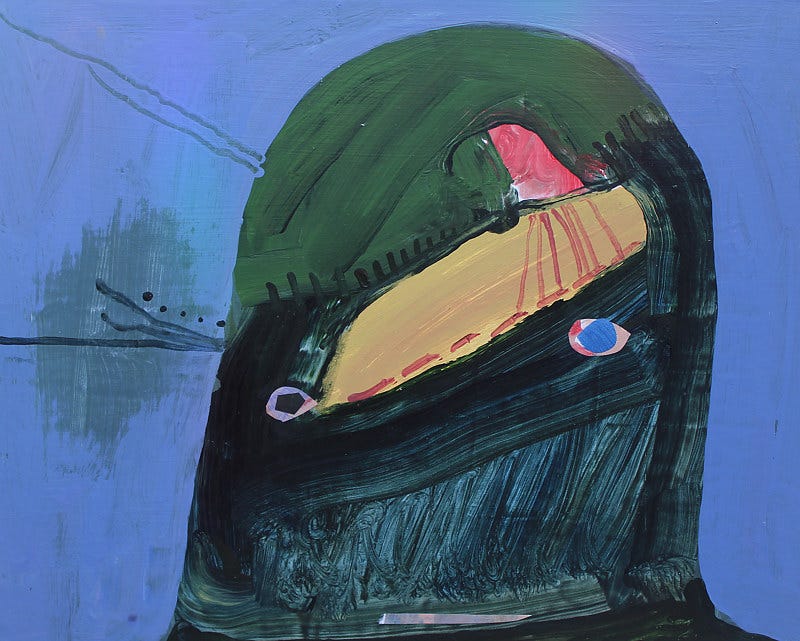

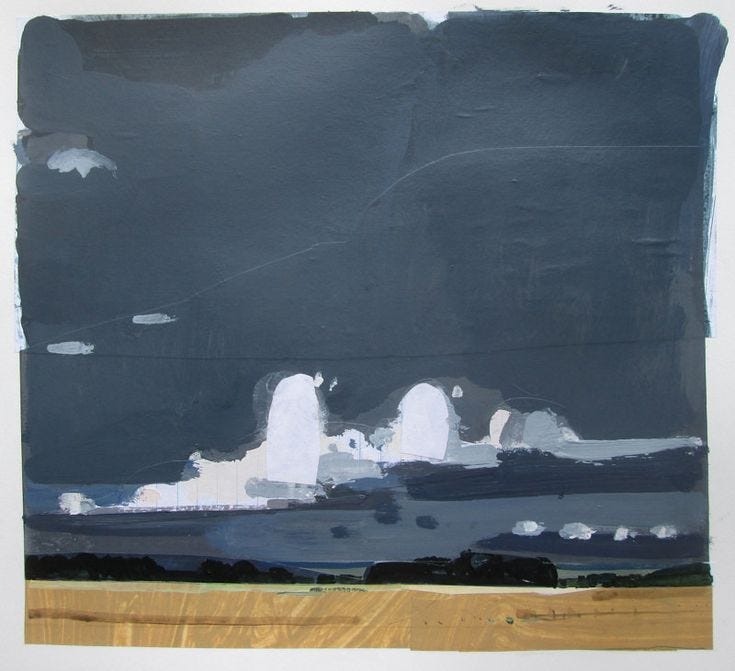
One of your most interesting and stimulating essays. Thank you.
Thank you! Fascinating. I can learn so much from you.